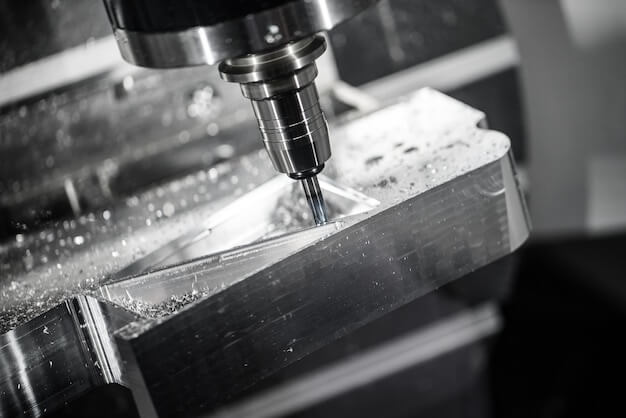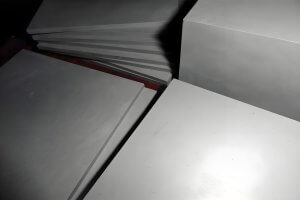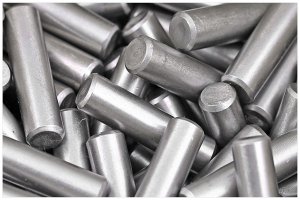Introduction to Electrical Discharge Machining (EDM)
Electrical Discharge Machining, commonly known as EDM, is an advanced machining technique used to shape hard metals and other conductive materials through the use of electrical discharges or sparks. The process involves creating a series of rapid-fire electrical sparks between an electrode or wire, also referred to as the tool-electrode, and the workpiece. These recurring sparks erode material from the workpiece in a controlled manner, forming intricate shapes that would be difficult or impossible to achieve with traditional mechanical cutting methods. With its high precision and ability to produce complex geometries, EDM has become a vital manufacturing process in industries such as aerospace, automotive, and mold-making among others.
What is Sinker EDM?
Sinker Electrical Discharge Machining, commonly referred to as Sinker EDM, is a specialized machining process that molds materials into complex shapes and designs by using electrical discharges or sparks. The fundamental concept involves submerging both the workpiece and an electrode into dielectric fluid, which acts as an insulator until sufficient voltage is applied to enable the spark to pass through. As the electrode descends towards the workpiece, the intense heat of these controlled sparks erodes the material in the desired pattern without making physical contact with it. This process requires specific equipment: a power supply generating rapid electrical discharges, precise servomechanisms to maintain control over the electrode’s positioning and movements, and frequently a CNC system facilitating automated operation for intricate part geometries.
Applications of Sinker EDM
Sinker Electrical Discharge Machining (EDM) is particularly effective in the creation of complex geometries within hard metals that are difficult to machine using traditional methods. A typical use case for sinker EDM includes the production of intricate molds and stamps that require fine details and precision, such as those used in the aerospace, automotive, and medical industries for component manufacturing. The advantage of sinker EDM in these applications lies in its ability to handle various three-dimensional shapes, deep cavities, or narrow ribs without causing distortion to the material. For example, the intricacies involved in cooling channels of injection molds can be efficiently tackled with sinker EDM due to its capability to precisely erode material regardless of geometric constraints.
What is Wire EDM?
Wire Electrical Discharge Machining (EDM) is a precise manufacturing process where a desired shape is obtained using electrical discharges, or sparks. The material is carefully eroded from the workpiece by a series of rapidly recurring current discharges between the wire or electrode, which acts as the cutting tool, and the conductive workpiece, separated by a dielectric fluid that helps to flush away the removed material. Key components in Wire EDM include the wire itself, typically made from brass or stratified copper; the deionized water or other dielectric fluid serving as both coolant and electric insulator; CNC-controlled rollers guiding the wire; power supply generating the rapid pulses; a positioning system ensuring accuracy; and an automatic wire feeder managing the continuous flow of fresh wire. Each part plays a pivotal role in maintaining precision—rollers preventing wire deviation, the power supply regulating electrical discharges, the positioning system providing micrometre-level movements, and the deionizing unit preserving the purity of the dielectric fluid.
Applications of Wire EDM
In the realm of industrial manufacturing, Wire Electrical Discharge Machining (Wire EDM) is widely employed for its precise cutting capabilities which are essential in creating intricate components where tight tolerances and delicate structures are required. Common applications include the production of various aerospace and medical components whose complex shapes and exacting specifications cannot be achieved through traditional machining methods. One significant advantage of Wire EDM is its proficiency in cutting exceptionally thin materials without causing distortion or damage to the workpiece. Additionally, the precision afforded by Wire EDM allows for the creation of gears, tools, and dies with fine details such as narrow slots, sharp internal corners, and intricate patterns.
Key Differences between Sinker EDM and Wire EDM
Electrical Discharge Machining (EDM) is a critical technology in the manufacturing industry, offering precision machining of conductive materials. Among its variations, Sinker EDM and Wire EDM stand out for their unique capabilities and applications. Understanding the key differences between these two processes is essential for selecting the appropriate method for specific manufacturing needs.
Machining Process
- Sinker EDM involves a custom-shaped electrode that “sinks” into the material, creating cavities or 3D shapes. This process is akin to stamping or molding, where the electrode’s shape directly influences the final form.
- Wire EDM operates with a continuously moving wire that acts like a saw, cutting through the material along a predetermined path. This method is more aligned with contour cutting, offering precision in creating detailed 2D profiles.
Geometry and Design Capabilities
- Sinker EDM excels in creating complex 3D geometries, blind cavities, and intricate molds, limited by the shape of electrodes.
- Wire EDM is adept at producing detailed 2D profiles and intricate patterns, suitable for high-tolerance parts requiring fine details.
Tooling Requirements
- Sinker EDM requires custom-shaped electrodes, often made of graphite or copper, tailored for each project. The dielectric fluid used is typically hydrocarbon or kerosene oil.
- Wire EDM utilizes a thin wire, usually brass or coated metal, as a cutting tool. The wire is uniform in length and cross-section, with deionized water serving as the dielectric medium.
Surface Finish
- Wire EDM achieves a finer and smoother surface finish due to the uniformity and thinness of the wire used in cutting.
- Sinker EDM may produce a slightly rougher surface finish, as the discharge occurs along the various edges of the shaped cutting tool.
Precision
Both methods are capable of high precision, typically around 0.0001 inches. However, Wire EDM can often exceed this level of precision, with some machines achieving tolerances of 0.0005 inches.
Applications
| Applications | Sinker EDM | Wire EDM |
|---|---|---|
| Machining Process | Uses a 3D tool to sink into the workpiece, creating cavities with sparks. | Utilizes a wire that cuts profiles in the workpiece through linear sparks. |
| Best For | Mold and die-making, particularly in automotive and manufacturing sectors. | High precision and intricate detailing, such as parts of airplanes, microchips, and medical devices. |
Selecting the Right EDM Process for Your Project
When embarking on a manufacturing project, understanding which EDM process—sinker or wire—to employ is fundamental to achieving desired outcomes. The selection largely depends on factors such as the complexity of the components, the materials involved, and the precision required. For instance, intricate three-dimensional shapes with fine detail are often the domain of sinker EDM due to its ability to maneuver electrodes in various orientations. Conversely, wire EDM is typically chosen for projects that necessitate fine cuts with a high degree of accuracy and minimal distortion, such as producing thin, complex parts from hard metals. Another critical consideration is volume; wire EDM’s faster setup times can be more cost-effective for larger production runs. Evaluating each of these aspects enables informed decision-making tailored to the specific needs of the project at hand.
Other Articles You Might Enjoy
- Unveiling the Wonders of Wire EDM: Masterful Precision Machining for Intricate Components
Wire Electrical Discharge Machining (EDM) is a specialized manufacturing process where electrical discharges are used to cut metals with high precision, shaping intricate contours and patterns that would be difficult…
- Electrical Discharge Machining (EDM) Basics: Process, Benefits, and Multidisciplinary Applications
Introduction to Electrical Discharge Machining (EDM) Electrical Discharge Machining, commonly referred to as EDM, is a non-traditional machining method that employs electrical discharges or sparks to remove material from a…
- Galvanized Steel vs Aluminum: Understanding the Key Differences
Introduction In the realm of metalworking and manufacturing, two materials often dominate the conversation: Galvanized Steel and Aluminum. Both are extensively used across various industries, from construction to automotive manufacturing,…






